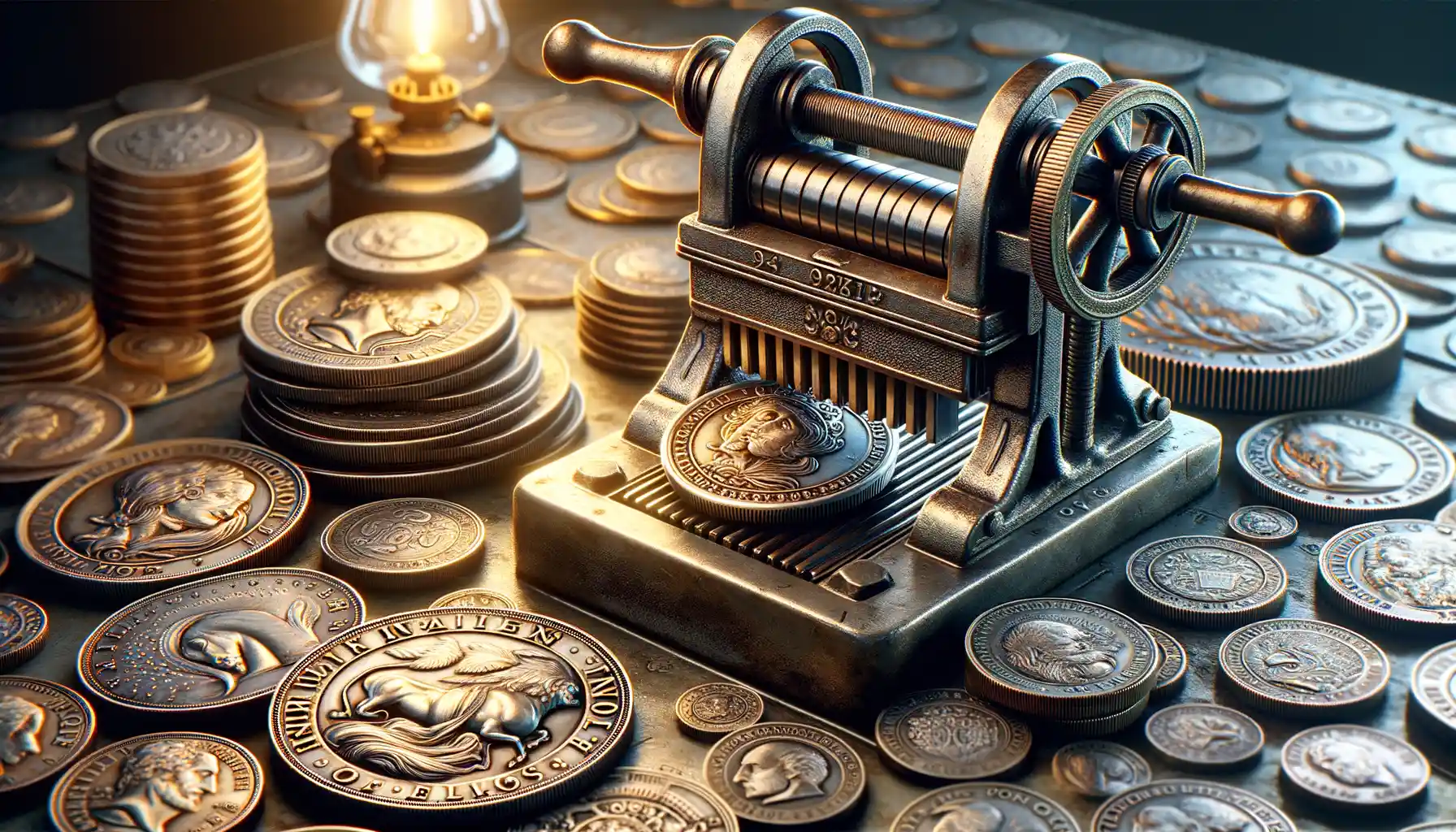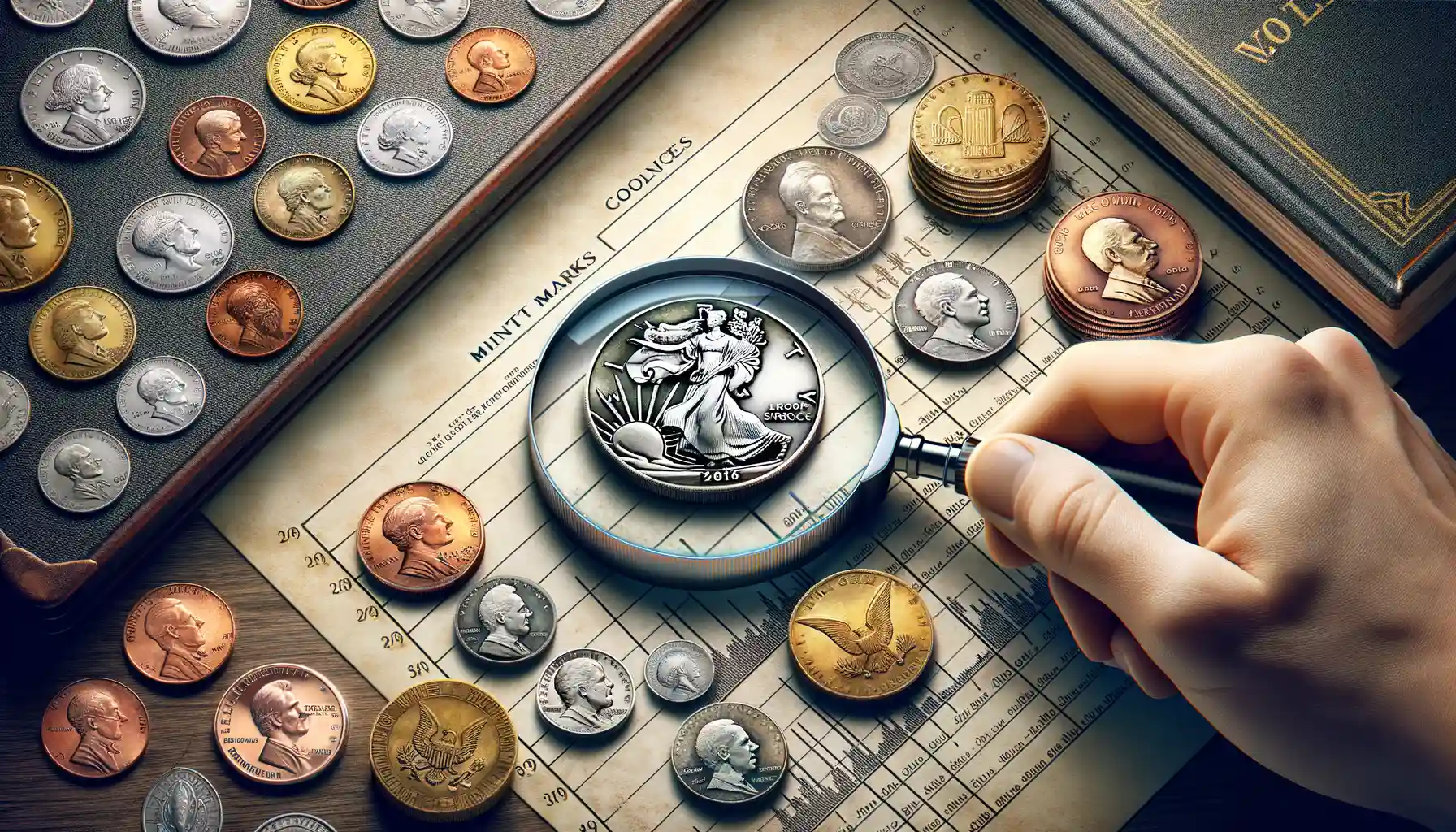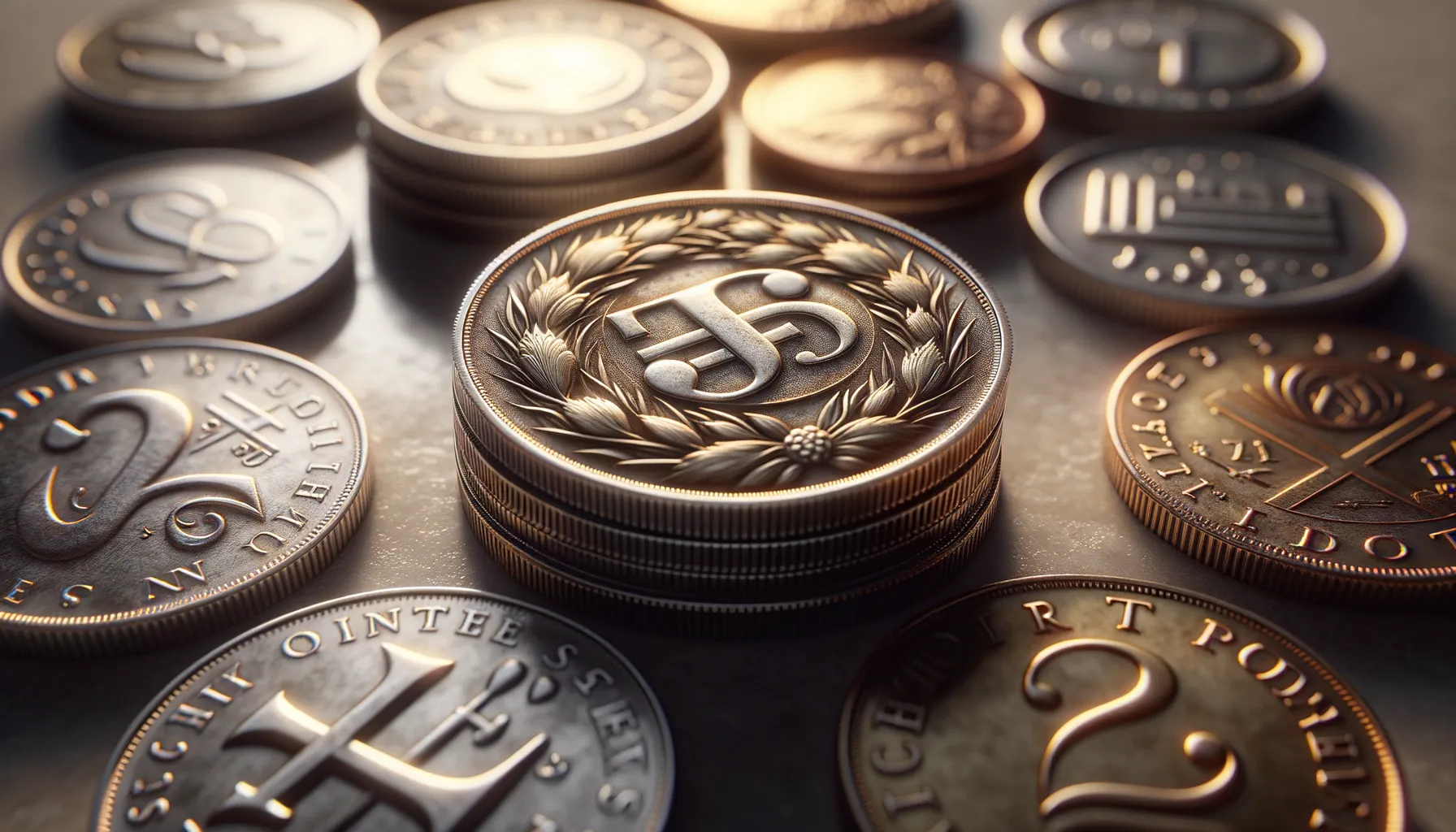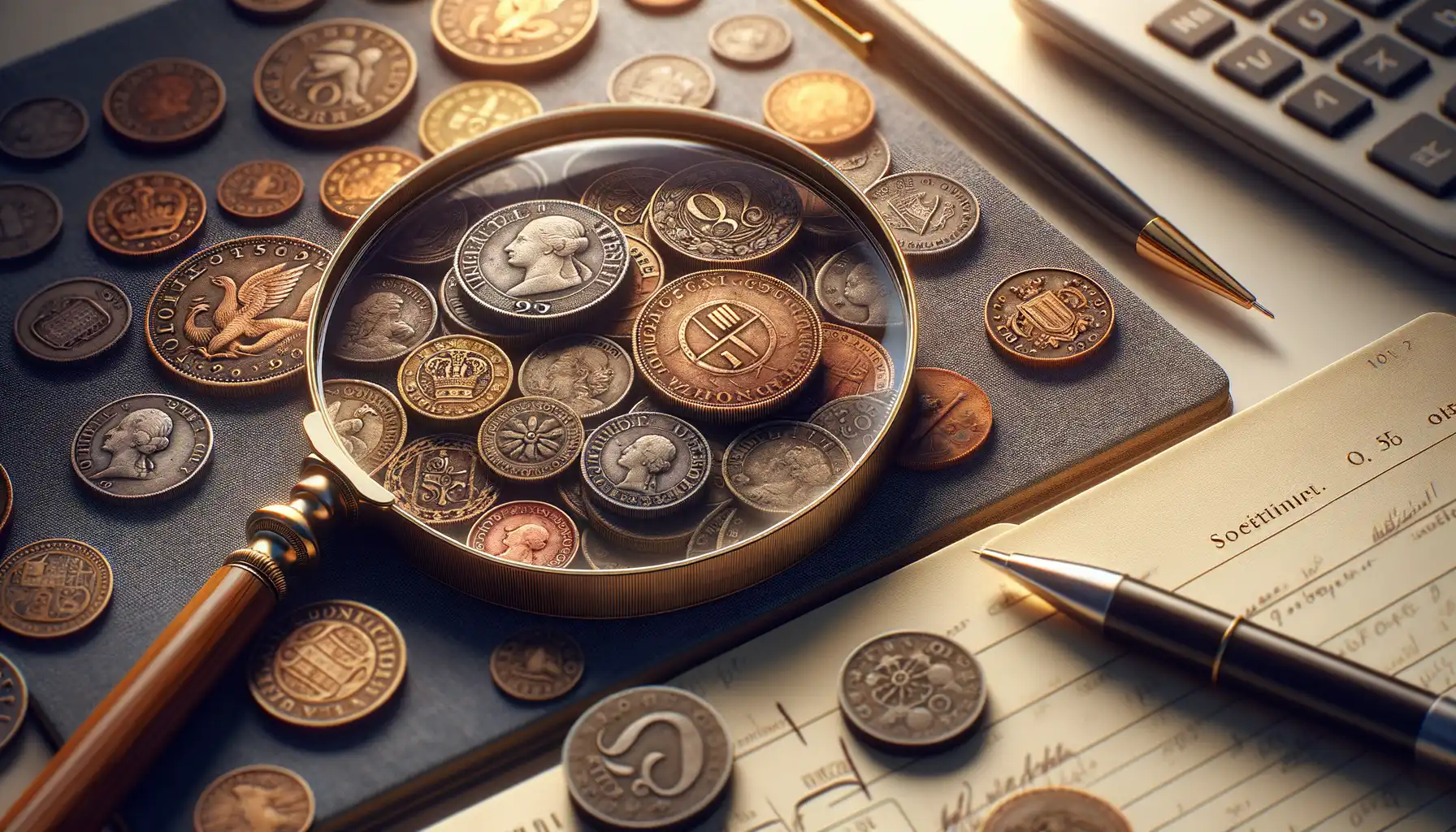What Are Mint Marks and Their Origin?
Tracing the History of Mint Marks
If coins could talk, their mint marks would be the storyteller’s whisper in your ear. These tiny symbols—often just a letter or two—reveal where a coin was struck, grounding it in history and geography. They’re like a secret signature from mints around the world, ensuring that no two coins are ever quite the same.
The journey of mint marks begins thousands of years ago when ancient civilizations, from Greece to Rome, marked their coins to indicate their origin. Think of them as the postal code of the coin world! You might stumble across an “S” for San Francisco, a “D” for Denver, or an “O” for New Orleans on U.S. coins—each letter rich with its own story of economic demand, historical moments, and local pride.
Why Mint Marks Matter
Mint marks aren’t just functional—they’re an adventure waiting to happen for collectors. Here’s why they matter:
- Authentication: Mint marks help identify genuine coins versus counterfeits.
- Value: Certain mints produced fewer coins, making those with specific marks rarer—and pricier!
- Legacy: Each mint mark ties a coin to its unique place in history.
Next time you glimpse a seemingly insignificant letter on a coin, pause. That little mark is a key to unlocking a piece of the past, blending craftsmanship, legacy, and intrigue.
Understanding the Role of Mint Marks in Coin Production

The Hidden Map to a Coin’s Journey
Imagine every coin as a tiny traveler, and its mint mark as the passport stamp revealing where its journey began. These small, often-overlooked symbols—be it a “P,” “D,” or “S”—hold the secrets of a coin’s birthplace. A coin struck in Denver carries the proud mark of “D,” while coins from Philadelphia often showcase either a “P” or no mark at all, blending mystery with history.
But why do these little letters even matter? Think of mint marks as quality control checkpoints for the enormous task of coin production. They help governments track the origins of billions of coins minted annually. From design intricacies to proper metal composition, each mint location has its own set of processes overseen by rigorous standards.
- Early U.S. Mint marks: Grew from necessity when multiple mints were established to serve expanding economies.
- Modern marks: Now blend practicality with collectibility, adding a touch of regional pride to your pocket change.
It’s poetic, really—these tiny symbols act as a window into history, geography, and craftsmanship, all embedded within a single shiny piece of metal.
How Mint Marks Affect Coin Value and Collectibility

The Magic Touch of Mint Marks on Coin Value
Imagine holding a coin that whispers stories of its origin. That’s the charm of the mint mark—a tiny, unassuming letter that can skyrocket a coin’s worth in the blink of an eye. Why? Because not all mints are created equal. Some churned out millions of coins, while others operated like hidden workshops, producing just a few rare gems.
For instance, coins minted in Carson City bear the coveted “CC” mint mark, a symbol of scarcity and Old West history. These often fetch jaw-dropping prices at auctions. Meanwhile, a dime with a “D” for Denver, struck in the same year, might trade hands for mere pocket change. The difference lies in rarity and demand—two forces that send collectors into a frenzy.
The Collector’s Secret Code
Mint marks act like a treasure map for collectors. Seeing one of these markings is like uncovering a secret code! Here’s why they matter:
- Rarity: Coins from closed or low-output mints are jackpot finds.
- Historical events: Special editions or war-time mints carry extra significance.
- Market demand: Fewer coins mean higher stakes for collectors.
So, when you spot those tiny letters, remember—size isn’t everything, but impact sure is!
Identifying Mint Marks on Popular Coins

Where to Spot Mint Marks on Famous Coins
Ever squinted at a coin, wondering where its tiny secrets are hiding? That’s the magic of mint marks—they’re like a coin’s backstage pass, quietly revealing its origin story. Let’s dive in and uncover their secret spots on some beloved coins.
Take the iconic Lincoln Cent, for example. The mint mark? Oh, it’s there—just beneath the year on the coin’s obverse (the “heads” side). It’s subtle yet powerful, instantly distinguishing a Denver-made penny from one born in San Francisco.
Now for the standout Morgan Silver Dollar. These beauties love to make you feel like a treasure hunter. Flip it over, and viola! You’ll find the mint mark perched gracefully above the “DO” in “DOLLAR.”
And let’s not forget the legendary Washington Quarter. From 1968 onward, its mint mark sits snugly on the obverse, to the right of George’s powdered wig. A small detail, but one that can make a collector’s heart skip a beat!
- P for Philadelphia
- S for San Francisco
- D for Denver
Every mark tells a story—keep searching for yours!
Tips for Collectors: Preserving Coins with Mint Marks

Guarding Your Treasure: Coin Preservation Basics
If coins could talk, they’d tell stories of travels, trades, and time. But preserving that rich history—especially with those precious mint marks—requires a little tender love and care. Here’s how to become the ultimate coin caretaker.
First, know this: your hands are not always your coins’ best friends. The natural oils in your skin can tarnish their surfaces over time. So, when handling, wear soft cotton gloves or, at the very least, hold the coin by its edges. Trust me—this small habit makes a big difference.
Looking for storage? Avoid tossing them into a jar or shoebox (the horror!). Coins demand a home worthy of their legacy. Use acid-free coin albums or archival-quality flips. Better yet, opt for individual capsules if you’re protecting high-value collectibles like those with rare “S” mint marks or Civil War-era pieces.
- Keep coins away from sunlight and damp spaces to prevent discoloration.
- Store in a temperature-controlled space—coins, like us, despise extremes!
Treat every coin like a time capsule because that’s exactly what they are. Handle with respect, store with intention, and your collection will shine for generations.





